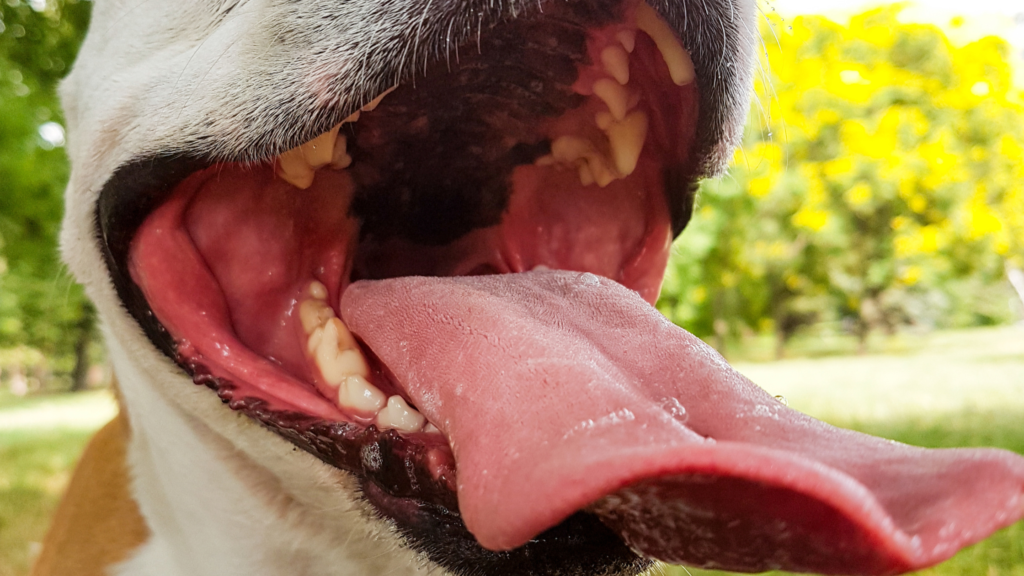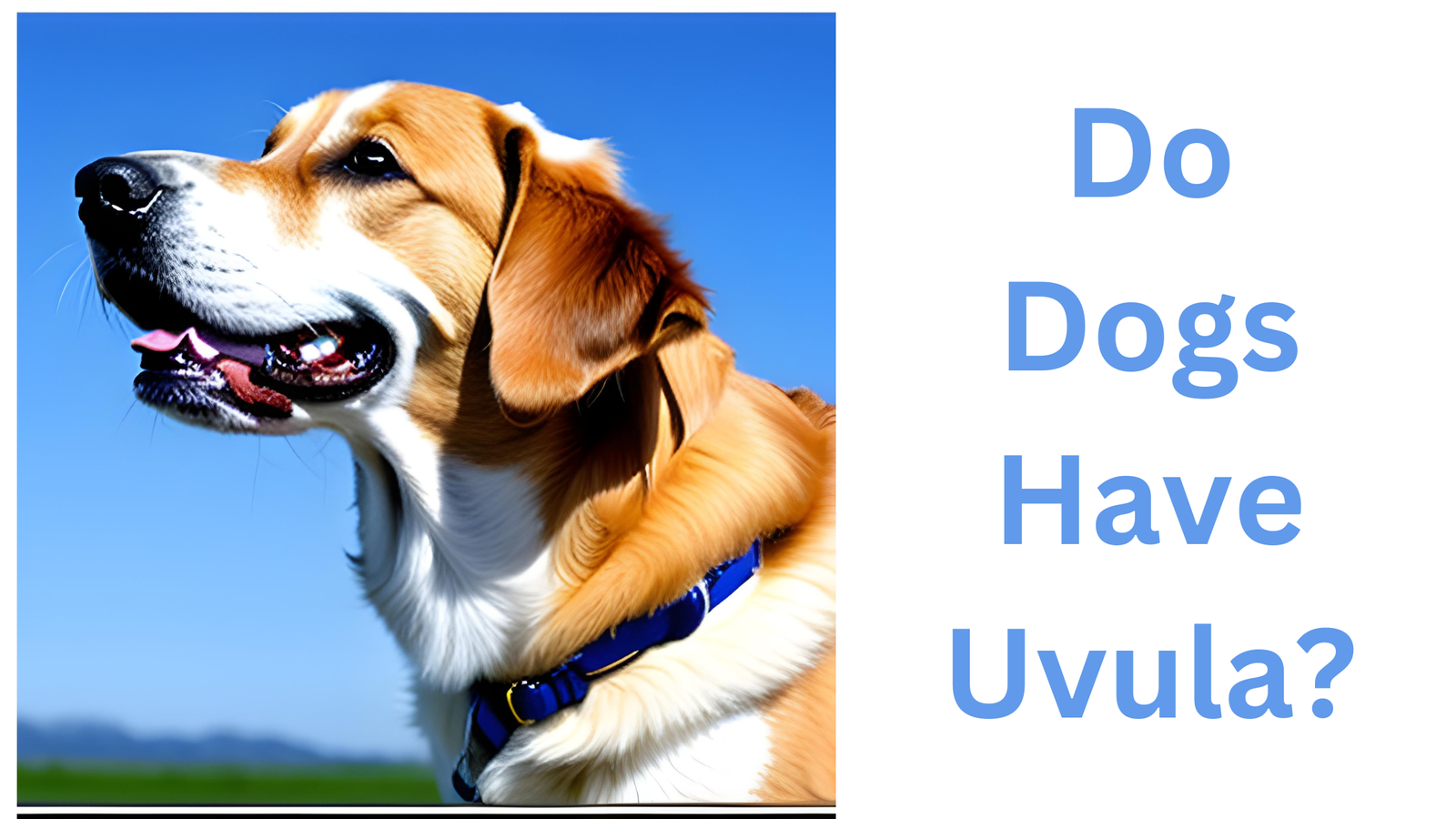Do Dogs Have Uvulas? The Uvula, a small fleshy structure located at the back of the throat, has always been a fascinating topic of discussion. Most people assume that only humans have uvulas, but is that the case? In this article, we will explore the anatomy and function of uvulas in different animals, specifically focusing on dogs. We will also answer some common questions about uvulas, such as why humans have them and their purpose.
What is a Uvula, and How Does it Work?
The Uvula is a small, fleshy, cone-shaped tissue that hangs down from the back of the soft palate in the roof of the mouth.
It’s located in the middle of the mouth, above the base of the tongue, and is often visible when a person opens their mouth wide.
The Uvula comprises connective tissue, muscle fibers, and glandular tissue.
The exact function of the Uvula is not entirely clear, but it is thought to play a role in speech, swallowing, and the immune system.
When a person speaks, air passes over the Uvula, causing it to vibrate and produce sound. This is why the Uvula is sometimes called the “little tongue.”
The Uvula also helps to prevent food and liquids from entering the nasal cavity when swallowing by directing them down the throat.
In addition, the Uvula may play a role in the immune system by producing saliva and antibodies that help to fight off infections.
Overall, while the exact purpose of the Uvula has yet to be fully understood, it is clear that it plays an important role in several functions of the mouth and throat.
Which Animals Have Uvulas?
While humans are the most well-known animals to have uvulas, others also possess them. Primates, such as apes and monkeys, also have uvulas that serve a similar purpose as humans.
Some other animals that have been found to have uvulas include dogs, cats, and even dolphins. However, the size and shape of the Uvula may vary in different animals.
In dogs and cats, for example, the Uvula is generally smaller and more pointed than in humans.
Nonetheless, the presence of a uvula in multiple animal species suggests that it may have a functional purpose in the anatomy and physiology of these animals, though the specifics may differ from those in humans.
Uvulas in Dogs: Anatomy and Function
The Uvula, a small bell-shaped structure hanging from the back of the soft palate in the human mouth, is present in most mammals.
But what about dogs? Do dogs have uvulas too? The answer is yes, dogs do have uvulas, although their shape and size may differ from humans.
In dogs, the Uvula is located at the back of the throat, near the tonsils. It is made up of muscle tissue, connective tissue, and glandular tissue.
The main function of the Uvula in dogs, as in humans, is to help with the production of saliva and facilitate swallowing.
It also plays a role in keeping food and liquids from entering the nasal cavity during swallowing.
Some dogs may experience issues related to their Uvula, such as elongation or inflammation, which can lead to snoring or breathing difficulties.
In rare cases, dogs may even require surgical intervention to address these issues.
Overall, while the Uvula in dogs may not play as crucial a role as in humans, it is still an important component of their anatomy and necessary for their overall health and well-being.
Do Dogs Have Uvulas? Exploring the Debate

The debate over whether or not dogs have uvulas is a topic of interest for many pet owners and animal enthusiasts.
Some believe that dogs do have uvulas, while others argue that they do not.
While it is true that dogs have similar structures in their throats, the debate largely centers around whether or not these structures should be considered true uvulas.
Anatomy-wise, dogs have a small, cone-shaped structure in the back of their throats, which some belief to be their Uvula.
This structure is responsible for helping to regulate the flow of food and liquids as they pass through the throat.
However, it is less well-defined than the human Uvula and lacks the same elongated shape.
Some experts argue that the canine structure is a collection of tissue and glands that serve a similar function but should not be referred to as a true uvula.
However, others believe that the anatomical differences do not negate the fact that dogs have a structure in their throat that serves a similar purpose to the human Uvula.
Ultimately, the debate remains ongoing and largely a matter of interpretation.
Also Read : Why Is My Dog Shaking After Vaccination? Best Guide
Why Do Humans Have Uvulas?
The Uvula is a small, fleshy projection that hangs down from the soft palate at the back of the mouth. While most mammals do not have a uvula, humans and a few other primates, do.
So why do humans have uvulas?
The exact purpose of the Uvula has yet to be fully understood, but researchers believe that it plays a role in speech and swallowing.
When we speak, air flows past the Uvula and causes it to vibrate, which may help produce certain sounds.
During swallowing, the uvula contracts and helps to prevent food and liquid from entering the nasal cavity.
Some scientists also believe that the Uvula may have a role in the immune system. The Uvula contains lymphoid tissue, which produces antibodies to fight off infections.
Overall, the exact purpose of the Uvula is still a subject of ongoing research and debate among scientists.
However, it is clear that the Uvula is an important part of the human anatomy and plays a vital role in speech and swallowing.
The Purpose of Uvulas in Humans and Other Animals

Uvulas are found in several animals, including humans, dogs, cats, and other mammals.
The primary function of the Uvula is to aid in speech and swallowing by directing the flow of saliva and preventing it from entering the nasal cavity.
The Uvula also plays a role in creating certain sounds during the speech, and its movement is regulated by the brain.
In humans, the Uvula is a small fleshy structure that hangs down from the soft palate at the back of the throat. It is composed of muscle tissue and covered with mucous membranes.
The Uvula has an important role in maintaining oral health, as it helps to prevent food and liquid from entering the nasal passages during swallowing.
Additionally, the Uvula has been shown to have a role in immune function, as it contains many lymphoid tissues that help fight off infections.
In dogs and other animals, the Uvula serves a similar function to humans by preventing food and liquids from entering the nasal cavity during swallowing.
However, the anatomy of the Uvula can vary greatly between different animal species, and some animals may not have a uvula at all.
While the Uvula may seem like a small and insignificant part of the body, it plays a crucial role in maintaining our health and aiding in vital bodily functions such as speech and swallowing.
Common Misconceptions About Uvulas
Uvulas are often misunderstood, and several misconceptions exist about their purpose and function. Here are some common misconceptions about uvulas:
- Uvulas are vestigial structures: Some people believe that the Uvula is a vestigial structure, meaning it no longer serves any purpose. However, as discussed earlier, the Uvula has important functions in speech and swallowing.
- Uvulas are responsible for snoring: While the Uvula can vibrate and contribute to snoring in some individuals, it is not the sole cause.
- Removing the Uvula will stop snoring: While uvulopalatopharyngoplasty (UPPP) surgery can reduce snoring in some people, it is not a guaranteed solution. Additionally, removing the Uvula can have negative effects on speech and swallowing.
- A longer uvula means a better singing voice: While it may contribute to a richer, deeper singing voice in some individuals, it is not a determining factor for vocal ability.
It’s important to understand the true functions and purposes of the Uvula and dispel any misconceptions that may exist.
Uvula-related Health Issues in Dogs and Humans
Uvulas are small but important parts of our bodies and those of our furry friends. However, they can sometimes be a source of health issues.
In dogs, uvula-related health issues are rare, but they can occur.
One potential issue is elongated Uvula, a condition in which the Uvula is longer than normal and can cause gagging, coughing, and other respiratory problems.
This condition is more common in dog breeds, such as brachycephalic (short-nosed) breeds. Another potential issue is uvulitis, which is inflammation or infection of the Uvula.
This can cause swelling, redness, and discomfort in the throat.
In humans, uvula-related health issues are more common. One potential issue is snoring, which can be caused by a uvula that is too long or swollen.
Sleep apnea, a condition in which breathing repeatedly stops and starts during sleep, can also be caused by an obstructed airway due to an enlarged uvula.
In addition, uvulitis can also occur in humans, which can cause sore throat, difficulty swallowing, and other discomforts.
Suppose you or your dog experience any uvula-related health issues. In that case, seeking medical attention from a qualified healthcare professional is important.
Sometimes, treatment may be necessary to alleviate symptoms and prevent further complications.
Also Read : How to train a dog to shed hunt – The Best Ultimate Guide
Conclusion: Understanding the Role of Uvulas in the Animal Kingdom
In conclusion, the Uvula is a small yet fascinating part of the anatomy found in humans and some other animals.
While its function may not be fully understood, it is believed to play a role in speech, swallowing, and immune function.
The Uvula has been the subject of much debate and curiosity, and there are still many unanswered questions about its purpose and evolution.
Whether you have a dog or are simply interested in anatomy, understanding the role of the Uvula in the animal kingdom can deepen your appreciation for the complexity of living organisms.
So next time you look in the mirror or give your furry friend a good scratch behind the ears, take a moment to appreciate this little-known but important body part.
